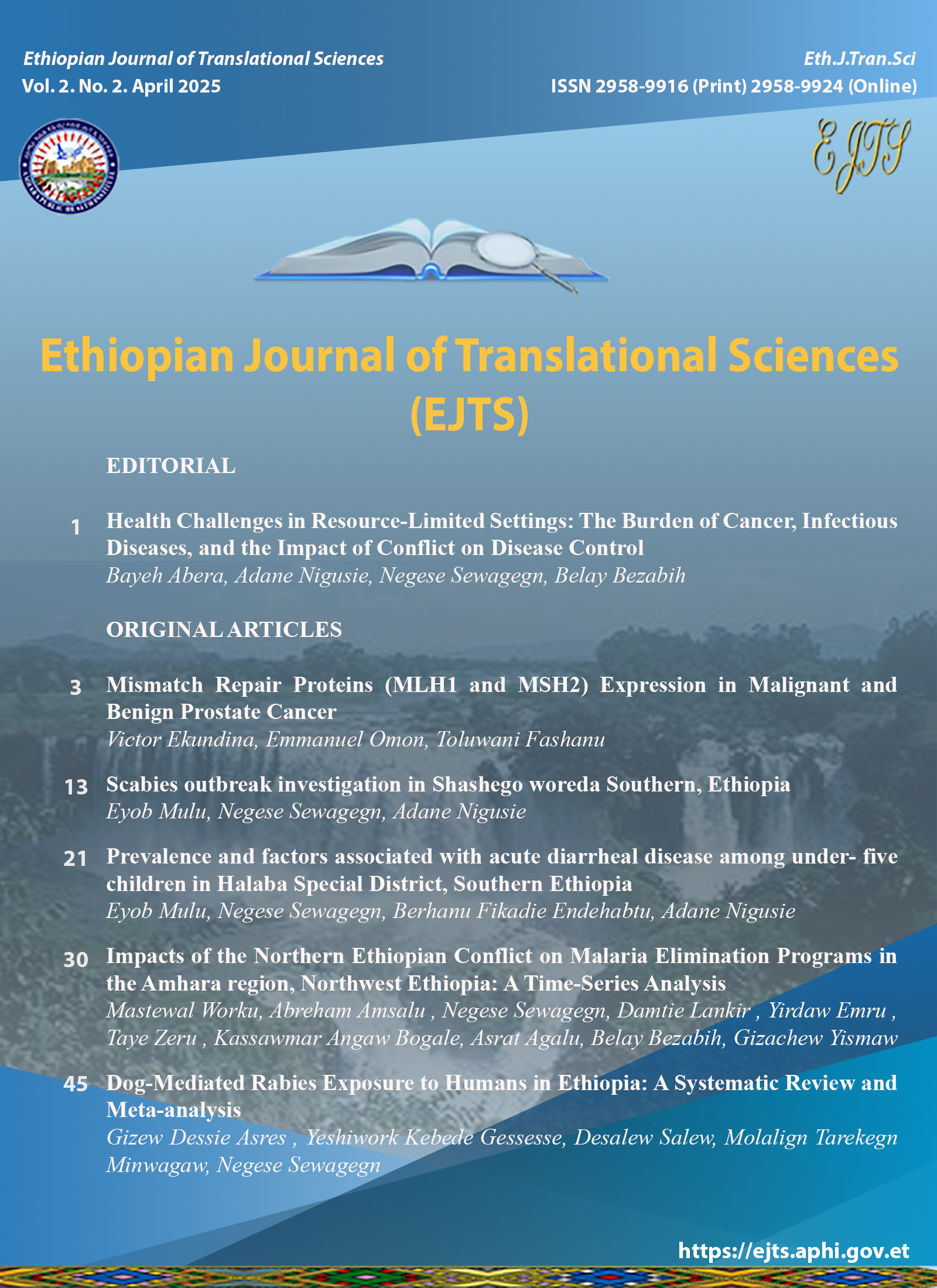Impacts of the Northern Ethiopian Conflict on Malaria Elimination Programs in the Amhara region, Northwest Ethiopia: A Time-Series Analysis
Keywords:
malaria, incidence, ITS, war, impact, Amhara RegionAbstract
Background: Malaria remains a significant public health challenge in the Amhara Region of Ethiopia. The armed Northern conflict from 2020 to 2022 significantly impacted the Amhara region, including driving internal displacement and disrupting healthcare services. This report aimed to assess the pattern of malaria epidemiology and the impact of war on elimination programs in conflict-affected zones of the Amhara Region.
Methods: Retrospective data, cross-sectional interrupted time-series analysis, and a project model were used to estimate the impact and calculate the relative level changes from 2020 to 2022. The model was validated by comparing the results with observed malaria incidence data.
Results: Although most health institutions have restored malaria services, they are still 24% below the pre-war levels, with up to 35 weeks of treatment interruptions occurring in conflict-affected areas and significant decreases in other zones. Malaria cases reported in 2021 surpassed those from 2018–2020, reaching 2020 levels, which is concerning because of continuous service interruptions. The number of confirmed cases increased across all district categories, with non-affected districts experiencing a proportionally larger increase than conflict-affected districts. Significant damage to malaria elimination supplies occurred in conflict-affected areas, especially North Shewa and South Wollo, leading to increases in cases. Ordinary least squares regression analysis further indicates a general decline in relative incidence ratios across conflict-affected districts, underscoring the impact of conflict on malaria control efforts.
Conclusions: A significant decline from pre-war levels and ongoing service disruptions in conflict-affected areas fuel malaria transmission, reactivation, and failed elimination. These calls for malaria elimination programs and vigilance surveillance systems for community screening, active case detection and effective management, and epidemiological studies to monitor the transmission dynamics.
Published
How to Cite
Issue
Section
License
Copyright (c) 2025 Ethiopian Journal of Translational Sciences

This work is licensed under a Creative Commons Attribution-NonCommercial-ShareAlike 4.0 International License.




